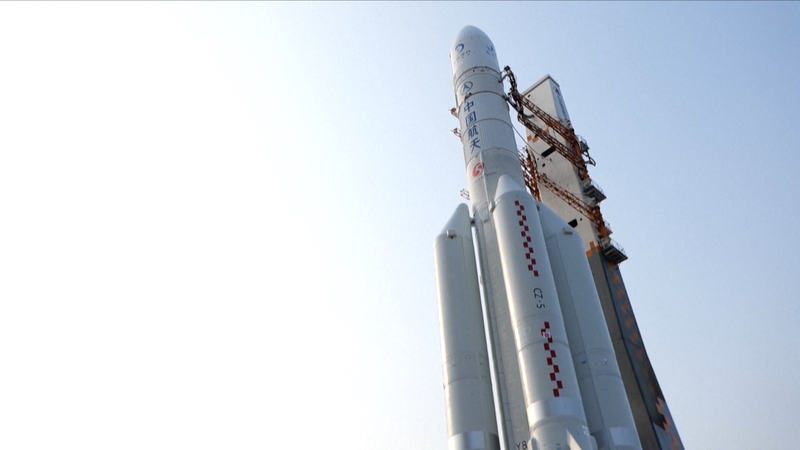China's Chang'e-6 Lunar Mission: Aiming for the Moon's Far Side!
Get ready, space enthusiasts! 🚀 China is set to launch its Chang'e-6 lunar probe this Friday between 5 p.m. and 6 p.m., with a preferred launch time at 5:27 p.m., according to the China National Space Administration (CNSA).
This groundbreaking mission aims to collect and return samples from the mysterious far side of the moon—a first in human history! 🌕🔍
The mighty Long March-5 Y8 carrier rocket is being fueled with liquid hydrogen and liquid oxygen, gearing up for this epic journey.
What's the Plan?
The mission unfolds in 11 exciting phases:
- Launch into orbit via the Long March-5 Y8 rocket.
- Begin a lunar transfer trajectory towards the moon.
- Brake upon reaching lunar vicinity to enter lunar orbit.
- Circumlunar orbit flight with the entire probe.
- Lander and ascender separate and descend to the moon's far side.
- Collect samples using drilling and scooping methods.
- Ascender takes off from the moon's surface.
- Rendezvous and dock with the orbiter-returner in lunar orbit.
- Transfer samples to the returner module.
- Head back to Earth.
- Re-enter Earth's atmosphere and land in Siziwang Banner.
\"After completing the sampling, the ascender will take off from the far side of the moon, rendezvous and dock with the orbiter-returner combination, and transfer the samples to the returner,\" explained Lu Yuntong from China Aerospace Science and Industry Corporation.
Why Is This Mission So Cool?
The South Pole-Aitken basin, where Chang'e-6 is headed, is the oldest and largest crater on the moon, holding secrets about our lunar neighbor and the Solar System. 🌌
\"The Chang'e-6 mission is of great significance for humanity's comprehensive understanding of the moon,\" said Hu Zhenyu, head of the engineering and technical team of the launch site. \"It will deepen research on the moon's origin and evolution, planetary evolution, and the origins of the Solar System.\"
By collecting samples from different depths, scientists hope to analyze the structure, physical characteristics, and material composition of lunar soil in regions we've never explored before! 🛰️🧪
Stay Tuned!
This mission not only marks a milestone for China's lunar exploration but also contributes to global understanding of space. So, mark your calendars and get ready to witness history in the making! 🎉
Reference(s):
cgtn.com




